Frequently Asked Questions
What should I do to be able to use my cell phone while traveling?
As you can imagine, a cell phone has become an indispensable tool to use for traveling. It’s not only useful for communicating with people at home via text and voice, we recommend that you use it for various apps as well. Here are some things to consider.
- The easiest way to get service while traveling is to pay your carrier for roaming service for voice and data. Depending on your mobile company, this can be quite seamless, but it can also be expensive.
- It is possible to travel without using any cellular service for voice or data. You can use the WiFi in your accommodation and at restaurants, bars, and other places with WiFi. Here are some ways to make this work:
- Use offline maps for Google Maps. Here’s a video to help you get started.
- Download Google Translate languages for offline use.
- Sometimes your home mobile phone carrier will allow you to make calls using WiFi without a charge. Look into this before you leave.
- Use WhatsApp to make calls from WiFi. WhatsApp is widely used around the world to make calls and send messages without charge. If your contacts at home have the app, you can call and message them. If you don’t know where to start, here’s a video that can help.
- If your phone is unlocked and is compatible with eSIM cards, this can be an inexpensive way to get mobile data while traveling.
- Check to see if your phone accepts eSIM cards.
- If you don’t know if your phone is unlocked, call your mobile phone company to ask them. If it is locked, ask them to unlock it for you.
- If everything looks good, we recommend using Airalo eSIM cards. They have a good reputation.
- If your phone is not compatible with eSIM cards, but your phone is unlocked, you can visit a mobile phone store once you arrive at your destination. They can check to see whether your phone will accept a physical SIM card. They often have very reasonable prices that include phone and data service. In most cases, you’ll get a local phone number that will make it very inexpensive to make and receive local calls. Keep in mind that this will usually “turn off” your normal phone service, so you won’t be accessible on your usual number unless you put your home SIM card back into your phone. Swapping physical SIM cards can be a cumbersome solution, but can save you money.
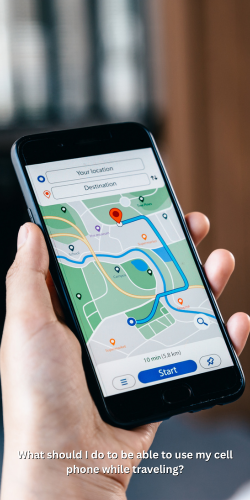
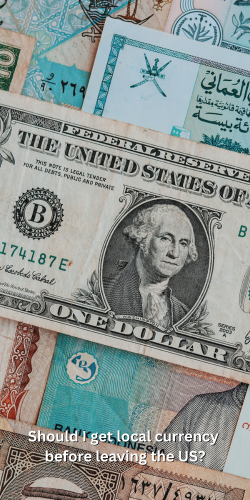
Should I get local currency before leaving the US?
In most cases, no. If you’ll be traveling to Europe, you will have access to ATM machines in the airport. The exchange rates offered by ATM machines are usually excellent. Most US ATM cards will work internationally. If you’re not sure, check with your bank. You might also ask about the fee for international withdrawals.
Generally, these ATM fees are less than the convenience fee charged at a “currency exchange” kiosk or station, especially at an airport.
You’ll usually pay a fee to your bank plus a fee to the bank that operates the ATM in your destination. Because these fees are often “flat” fees, it often makes sense to avoid taking out small amounts of cash frequently.
You’ll need to find a balance between taking out more cash than you’re comfortable carrying and visiting ATM machines frequently and paying more fees.
Will I be able to use my credit card while traveling?
Credit cards are accepted widely in Europe and in many other parts of the world. The exchange rates are excellent. However, you should check with your credit card company to be sure that your card does not charge a fee for international transactions. If it does, you should either upgrade your card with the bank you already use or look for another card to use while traveling.
Capital One offers some of the best travel credit cards without an international transaction fee. Many airline credit cards also offer this feature. We recommend using your “no-fee” credit card as much as possible. This way you can minimize your need for cash.
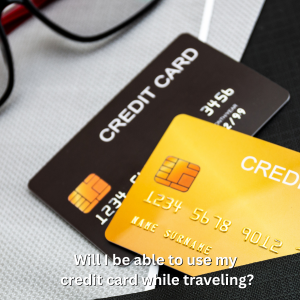
How much should I tip?
Tipping practices vary by country. Tips in Europe are almost always less than we are accustomed to in the US. Here’s a general guide to tipping in Europe. For specifics on the country you’re visiting, we recommend Googling “how much to tip in Germany” (or whichever country you plan to visit).
Avoid paying your tip by credit card as you might be used to doing in the US. Keep small amounts of cash handy and give the tip directly to your server if possible.
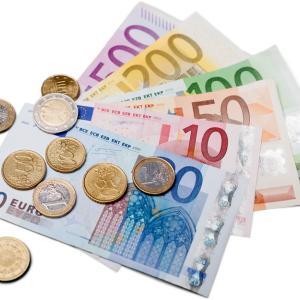
Do you have any other suggestions on money in Europe?
Sometimes when paying with a credit card, a merchant will give you the choice between paying in local currency or paying in US dollars. You should always choose to pay in local currency. There is a hidden fee for paying in US dollars.
This sometimes also happens at ATM machines. You will be given the option to withdraw a specific amount in US dollars. You should decline this option and simply withdraw an amount in local currency to avoid paying an extra fee.
What kind of plug adapter do I need to take?
Voltage in Europe is 220 as opposed to the 110 volts we are used to in North America. Most electronic devices like phone and camera chargers are able to switch automatically to 220 volts. Some devices may not automatically adapt to 220 volts. Always check before you leave to be sure that your devices are compatible with the 220 volts in Europe. If they are not, you will need to bring a voltage converter. If they are, you will simply need a plug converter.
Most countries on the continent use a Type C plug. You will usually be fine with this type of converter. Italy and Switzerland use slightly different plugs, but are generally compatible with Type C. The UK and Ireland use Type G plugs which are quite different from Type C.
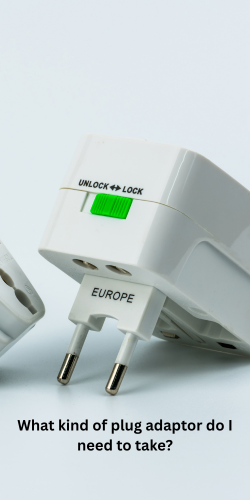
(Note that Taussig Travel gets a small commission for purchases made following some of the links on this page.)
